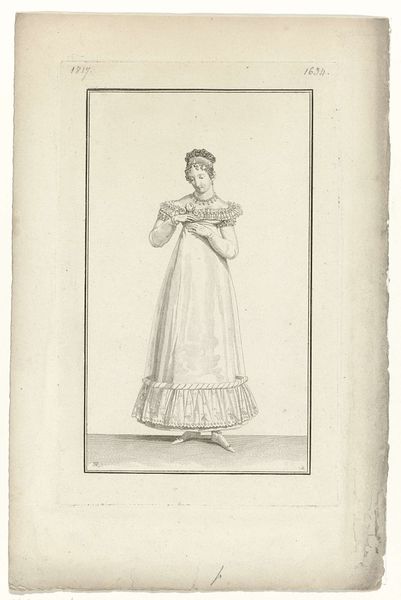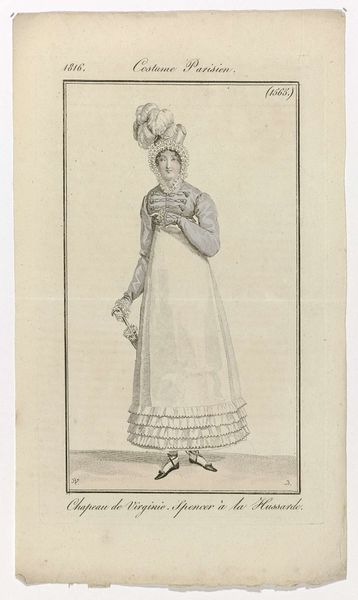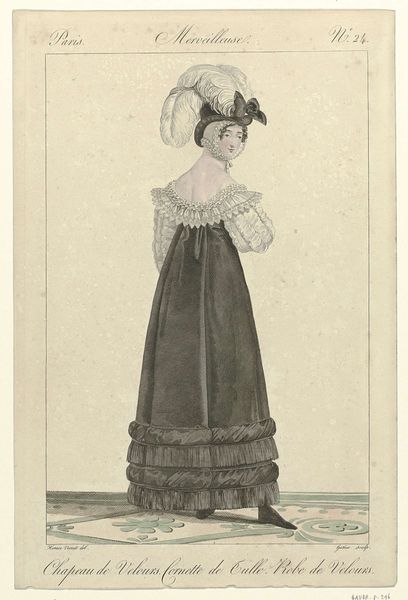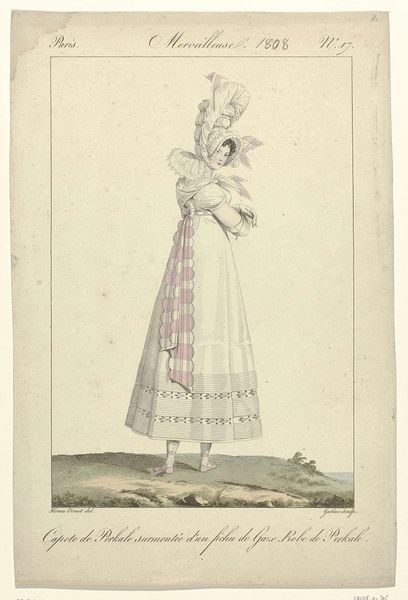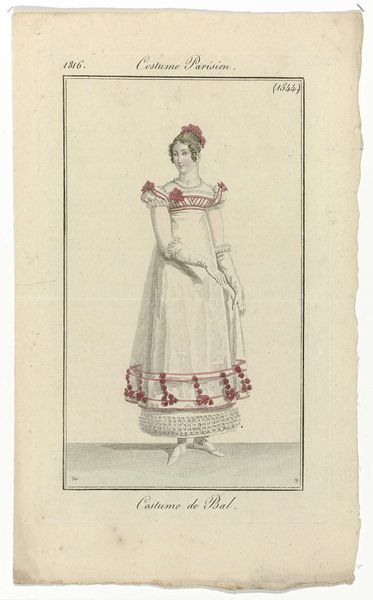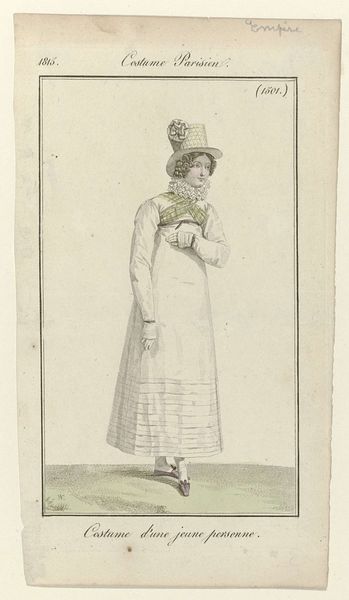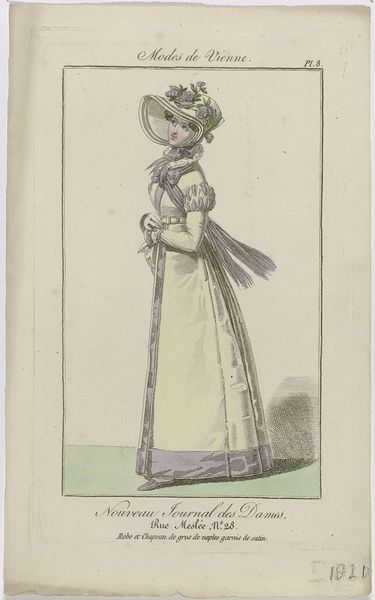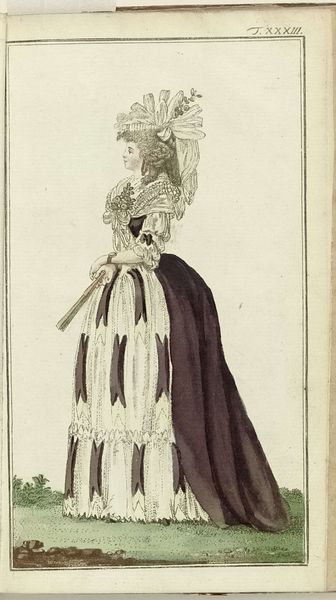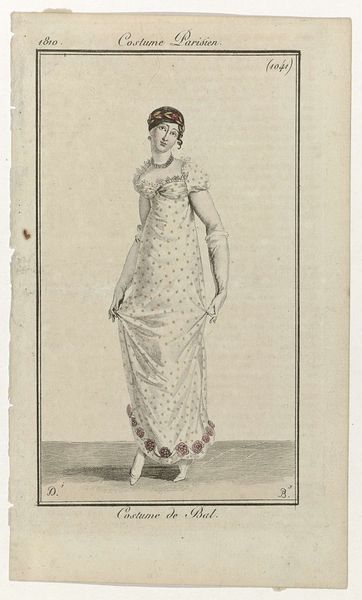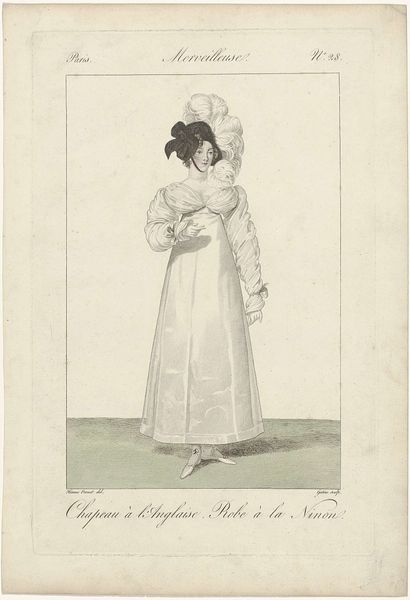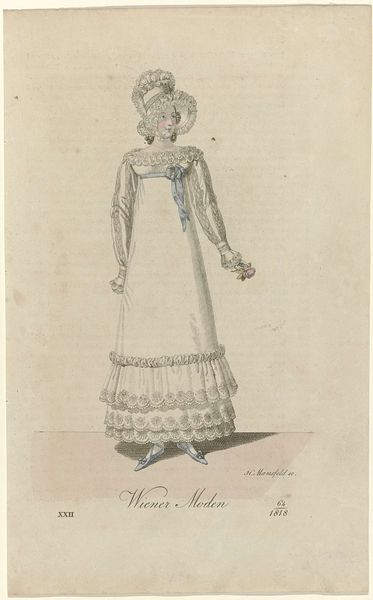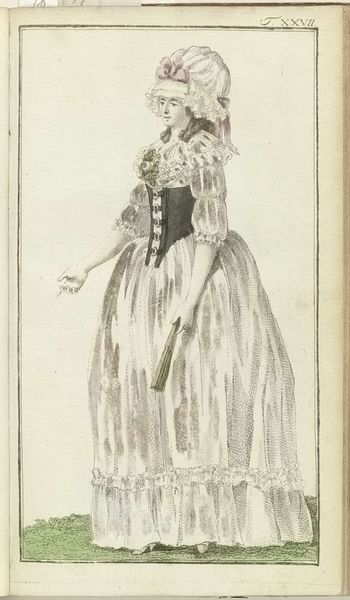
Fashion News Copied: Journal des Dames et des Modes: One Model 1817
0:00
0:00
drawing, print, engraving
#
portrait
#
drawing
# print
#
figuration
#
line
#
dress
#
engraving
Dimensions: height 178 mm, width 110 mm
Copyright: Rijks Museum: Open Domain
Curator: This engraving is titled "Fashion News Copied: Journal des Dames et des Modes: One Model," created in 1817 by Pierre Charles Baquoy. Editor: The woman seems like a ghost, she’s facing away from us, but her presence is commanding due to the vertical composition of the print and its stark palette. There’s a melancholic elegance. Curator: Fashion plates like this were tools for constructing identity and societal aspiration. What symbols might reveal clues about this particular representation? Editor: Notice the layers and textures: the ornate, almost cage-like bonnet overflowing with plumes, the dress fabric which seems light but restrictive and those bands of frills at the bottom! These things speak to wealth and status, but perhaps also confinement within those constructs. There's an underlying message about visibility versus restriction in that era. Curator: Exactly, her face obscured hints at a performative anonymity dictated by social mores, while simultaneously broadcasting fashionable status. These “fashion news” prints offered a language through which women could navigate—and sometimes subvert—expectations. Were women truly empowered to negotiate social hierarchies, or simply given better costumes to perform within existing limitations? Editor: I'd argue it's both. The visual language offers ways to negotiate within the existing framework. Look at the way she carries herself despite not engaging the viewer. And, thinking about the print itself... what would this image mean to the women seeing it for the first time, the consumers? Curator: This image, though seemingly simple, operates within and critiques early 19th century culture through coded visual cues about gender and social standing. The dress is both uniform and armour in an inequitable environment. Editor: Right, images were, and are, never neutral! Each element carries intention. Even these understated details contribute to the subject’s perceived role. Curator: This work is proof that everyday objects of visual culture reflect social power dynamics—an ongoing dialogue between the garment and the wearer. Editor: Absolutely. I leave feeling that this fashion plate is more of a reflection of how much can be said even without fully showing it all.
Comments
rijksmuseum about 2 years ago
⋮
Under the banner of ‘the newest of the new and the best of what’s good’, the German Allgemeine Moden-Zeitung (1807-1903) published illustrations that had often already appeared in leading French and English fashion magazines. These three models were copied from the French Journal des Dames and combined in a single print.
Join the conversation
Join millions of artists and users on Artera today and experience the ultimate creative platform.
